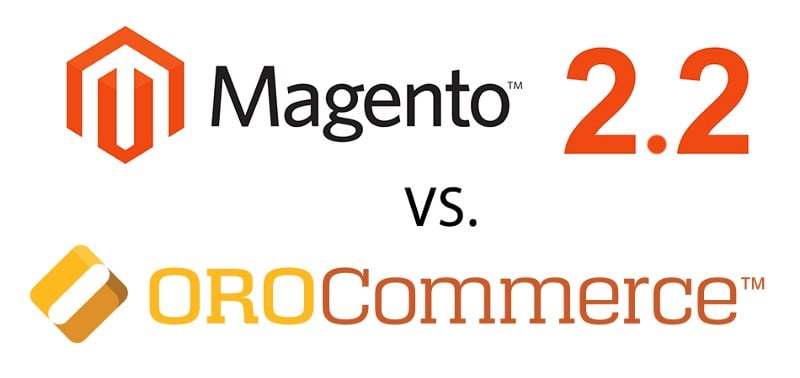There’s been a lot of talk and discussion around B2B and how it needs to change. Phone line, fax, mail orders are becoming an echo of the past as eCommerce is stepping in to automate wholesaler and distributor sales processes, extending availability from 9 to 5 to 24/7, reducing error, cutting down on costs and freeing up human resources to be assigned to more strategic areas of the business. In result, this ensures higher margins and increase in company growth.
What is B2B?
To get the basics clear – it’s an exchange of goods for currency, through the internet, via a sales portal between two businesses.
What are the common types of B2B eCommerce?
Self-Serve Model, Buyer-Seller Interaction, B2B Marketplace. It means there is more complex workflow, as well as the logic of product listing and pricing within each of these types compared to B2C.
Choosing the Right B2B eCommerce Platform
However, when it comes to choosing software, in a market as saturated as the e-commerce platform market, it can be very difficult to figure out which software best meets your needs. This time I’ve picked Magento 2 and Orocommerce. Both are ideal for medium to enterprise businesses. The biggest difference — Orocommerce is a platform fully dedicated to B2B and is fairly new. Still, packs a great variety of features and integrations with the rest of the Oro Inc platform & business application platform.
Magento, on the other hand, has been out there for a long time and from the beginning has been a B2C oriented platform. Nevertheless, this has changed since this year Magento has announced their latest B2B module which is already available to all partners for a test drive.
To give a better overview of both platforms, I’ve listed and compared functionality that is shared, limited or not available in one or the other:

Magento 2 vs. OroCommerce comparison
Even though the majority of features do exist on both platforms their usability and functionality coverage is quite different and it all comes to your specific business needs.
Magento 2 Pros and Cons
Magento’s platform has an extensive list of APIs and off-the-shelf extensions integrate with nearly any ERP, CRM or another backend system, so any businesses can leverage existing technology investments to drive digital transformation and bring new initiatives to market quickly.
Magento 2 Pros:
- Robust admin management.
- There are hundreds of extensions and themes for Magento. These extensions are like apps for your Magento store, allowing you to add all kinds of new features.
- Customization. There is no limit either to build your own or extend the existing Magento functionality.
- Fast and easy checkout out-of-the-box.
- Performance. The Enterprise version comes with a distributed Database architecture support.
- 24/7 Support Options.
Magento 2 Cons:
- You will have to manage your own backup and security (except for the Cloud version).
- Making sure the hosting fits your performance needs for the site to run smoothly.
OroCommerce Pros and Cons
Orocommerce is an open-source B2B eCommerce platform. Out-of-the-box features all of the functionality to launch and run a full 360-degree business without that much need of any customization.
OroCommerce Pros:
- A purely B2B focused platform.
- Comes out of the box with integrations with OROCRM and other marketing tools (e.g. DotMailer).
- Flexible B2B Workflow.
- B2B role structure.
OroCommerce Cons:
- Limited extension marketplace.
- Development availability and Support. Compared to Magento this is an area it needs to improve. Still, it will definitely pick-up as at the B2B market grows.
Why wouldn’t I just use Shopify?
I’ve heard this a lot. Don’t get me wrong, when it comes to starting a new business, running one on a fairly low scale or simply not having any limitations with the traditional eCommerce shopping flow, Shopify and services alike go a long way.
Still, there are limitations to consider:
- These platforms are meant for B2C stores, with no localization or integrations.
- They present complete vendor lock-in with no API access, no module customization, limited to whatever is available in the marketplace.
- Yours and every other shop look alike. No shopping flow customization and no won branding.
- Total cost = Project cost + $299 per month + 2.4% from all transactions and 30¢ per transaction + module subscription cost.
Magento 2 vs. OroCommerce Verdict
In conclusion, if you’re looking for an all in all covering solution without that much need of any customization and quick time to market, Orocommerce is definitely worth giving a try. From the other hand if you’re looking to extend your existing ecosystem and bringing automation to the next level with several integrations. You won’t go wrong with Magento.
I welcome an opportunity to have a direct discussion with you at a time of your convenience to discover best paths for one of these platforms to help you to reach your business goals.
Interested in Magento as your B2B solution? Let us help you! Scandiweb has the most certified Magento developer team in the world. If you’re looking for any Magento B2B solutions – check out our B2B Services Page or get in touch with us at [email protected]!



Share on: